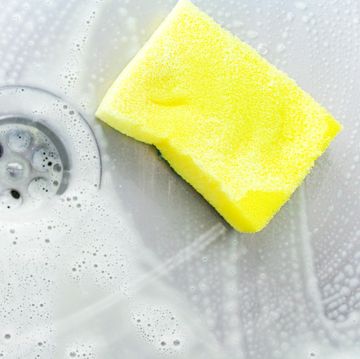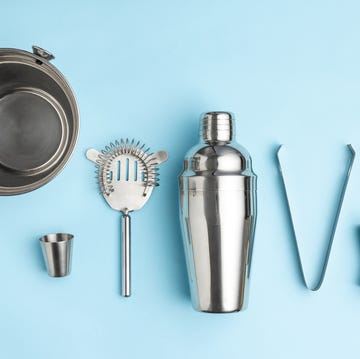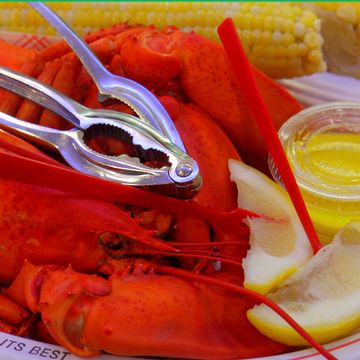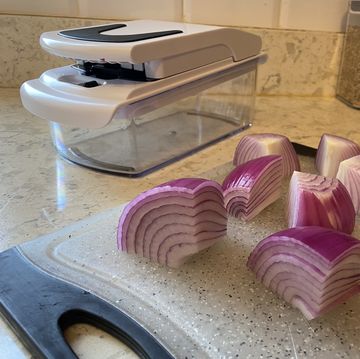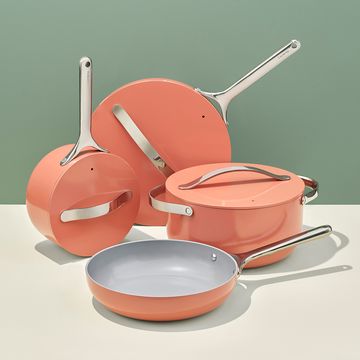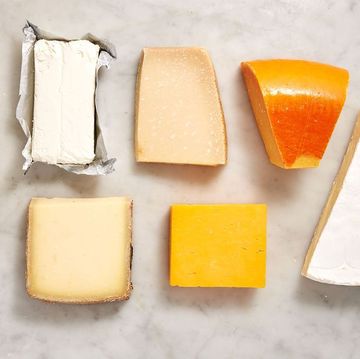Jump to:
Few things are as frustrating as opening up your freezer to find your ice cream and frozen steaks covered in a layer of ice. And after you try to scrape off the ice and eat the food anyway, an unpleasant taste is left in your mouth. When your food looks like it survived an avalanche, freezer burn is the likely culprit.
But what exactly is freezer burn? Here's science behind this dreaded freezer phenomenon and how to prevent it from ruining your food ever again.
What Is Freezer Burn?
Burn may be in the name, but there's no fire associated with this kitchen mishap. Freezer burn is what happens when the surface of your food loses its moisture. When this happens, the appearance, texture, and flavor of your food changes—and not for the better.
More From Delish

What Causes Freezer Burn?
Because of the nature of the freezer's ambient environment, any food you place in there is at risk of developing freezer burn. To keep your food frozen, the cooling mechanism in your appliance keeps the air cold and dry. When foods are exposed to that air, the moisture gets drawn out and refrozen on the surface of your steaks, ice cream, and fruit. That's where those ice crystals come from.
This process is known as "sublimation," according to Judith A. Evans, editor of Frozen Food Science and Technology. "Since the water vapor pressure over the surface of the frozen product is higher than that of the air, a constant loss of water in the form of vapor is produced from unprotected materials," she writes.
What Does Freezer Burn Look Like?
Freezer burn can vary in appearance depending on its severity and what kind of food it's affecting. A dead giveaway is spotting a layer of ice crystals on your food. On items like meat, you can also see patches of gray or brown discoloration that may also have a leather-like texture.
With frozen fruits and vegetables, freezer-burned items can become shriveled as a result of the moisture loss—especially with berries, peas, and other small items. Generally, the foods most impacted by freezer burns are the ones that contain the most natural moisture.
Another way to detect freezer burn is by smelling your food. Have you ever eaten something that was previously frozen and caught a whiff of a funky odor? Odds are freezer burn may be to blame.
Freezer burn can give an almost plastic-like aroma to your food—and not just the freezer-burned food, but everything else in there. If you have an ice maker or store ice in the freezer, your cubes will take on that musty smell and go on to infuse it into your beverages. Yuck!
How Does Freezer Burn Affect The Taste Of Your Food?
If you've ever seen a bad case of freezer burn, you may naturally worry about food safety. Discolored meat in particular can raise alarm bells. Rest assured you won't get poisoned by eating food affected by freezer burn. It's entirely safe to eat, as long as it hasn't been frozen for longer than the FDA-recommended time period.
However, that doesn't mean the flavor hasn't been impacted. "Freezer burn increases oxygen contact with the food surface area and raises oxidative reactions, which irreversibly alter color, texture, and flavor," writes Evans.
So even when you defrost and cook your freezer-burned food, the leathery texture, ugly discoloration, and musty flavor remain. Often times, your food will taste stale and unpleasant.
How To Avoid Freezer Burn
Anything stored in your freezer is at risk of developing freezer burn. However, there are some tips and tricks you can use to protect your precious groceries.
On the most basic level, you can avoid freezer burn by not keeping your food in the freezer long enough to develop it. The effects of freezer burn get more pronounced over time, so keeping track of what you're storing and when to defrost it will keep the ice crystals at bay.
A technique used in professional kitchens all over the country is labelling your food with a name and date. With just masking tape and a sharpie. you can easily identify what foods to thaw and eat first. It may add an extra step to stowing away leftovers, but we promise it's worth the effort.
You should also properly package your food. "Freezer burn is prevented if a product is packed in tight-fitting, water-proof, vapor-proof material," writes Evans. Creating a physical barrier between your food and the cold air prevents moisture evaporation from turning into ice crystals.
It's important to remove as much exposure to air as you can. For containers like ice cream cartons, there are still pockets of air that can cause freezer burn. One solution is to tightly press a layer of plastic wrap or wax paper against the surface of your ice cream before replacing the lid.
For other items like frozen fruit or meat, the packaging it came in at the supermarket typically won't cut it. One extra step worth taking is transferring your food to airtight containers.
If you're willing to make the investment, an at-home vacuum sealer is a workhorse in your kitchen that will draw out any air and keep freezer burn at bay. However, you can still achieve a similar result with a regular pack of zip-top freezer bags.
To push out any extra air, place your food in the bag and close it nearly all the way, leaving a small pocket for air to escape. Then gently press the air towards that opening and out of the bag. Once most of the air is out, you can seal the bag the rest of the way and store it in the freezer.
Do you have any other tips to prevent freezer burn? Let us know in the comments.
Gabby Romero is Delish’s editorial assistant, where she writes stories about the latest TikTok trends, develops recipes, and answers any and all of your cooking-related questions. She loves eating spicy food, collecting cookbooks, and adding a mountain of Parmesan to any dish she can.

